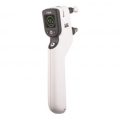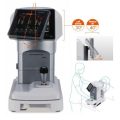No products were found matching your selection.
+65 6514 0848|info@ophthalmic.com.sg
- Home
- About Us
- Products
- Amsler Chart
- Binocular Loupes
- Binocular Vision Examination
- Chart Panels
- Colour Vision Test
- Contrast Sensitivity Test
- Dry Eye Diagnostic Device
- Imaging Tool
- Laser
- Low Vision
- Mesopic Vision and Glare Sensitivity
- Microperimetry
- Ocular Straylight
- Ophthalmic Lenses
- Ophthalmoscope
- Pachymetry
- Perimetry
- Photocoagulation
- Pupillometer
- Retinal Imaging
- Retinoscope
- Slit Lamp
- Sports Vision
- Stereopsis
- Tomography
- Tonometer
- Topography
- Trial Frame
- Ultrasound
- Vision Charts
- Vision Charts – Pediatric
- Vision Therapy
- Vitreolysis
- Events
- Contact
- Sales & Enquiry



